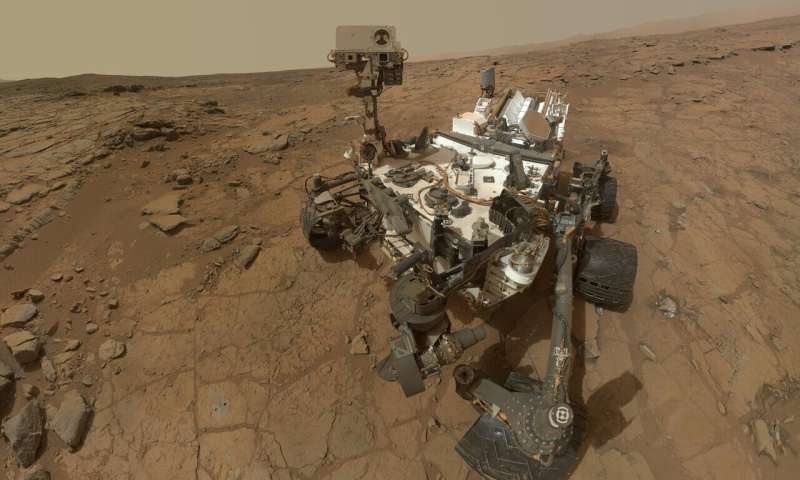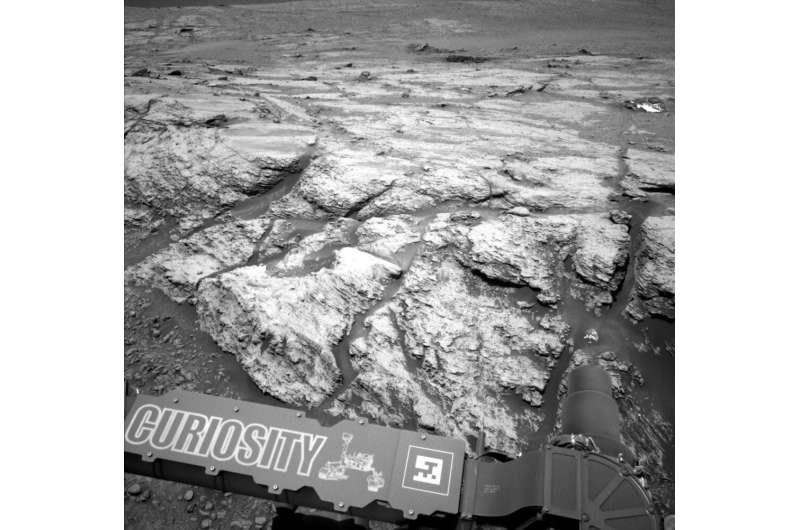June 24, 2019 report
Curiosity Rover finds high levels of methane on Mars

A team working with NASA to study data the Mars Curiosity Rover has found high levels of methane at a site on the Red Planet. The existence of methane is, of course, a possible sign of life, since it is produced in abundance by microorganisms here on Earth.
The methane readings were reportedly three times as high as the previous record on Mars—enough for officials at NASA to change the schedule for the rover over the weekend. They had the rolling probe take more readings at the same site, which, the JPL reports, should be ready for release as early as today. If the readings are due to some form of life, NASA scientists expect it would be in the form of microbes living just under the surface.
Curiosity Rover has been on the surface of Mars since 2012, dutifully carrying out research—its mission was originally planned for just two years, but the little rover has continued to function despite wear and tear and the ever-present Martian dust. Back in 2013, Curiosity sent readings indicating that it had found some amount of methane, and a day later, the orbiter confirmed the readings. Interestingly, a European space probe called the Trace Gas Orbiter studied the same part of Mars in 2016 and could not find any trace of methane.
The discovery of methane on Mars is also interesting because the gas is known to break down when exposed to sunlight and other chemical reactions—thus, any methane found on the surface would have to be relatively new—within a couple of centuries. But the New York Times also notes that it is possible that a geological process long ago could have generated some amount of methane, and it became trapped beneath the surface—its presence on the surface now would be the result of a slow leak.

Marco Giuranna with the National Institute for Astrophysics in Italy has been assigned the task of studying methane measurements taken by the rover—he told the Times that he and his team have been analyzing the signals sent back by the rover and that there is a "lot of data to be processed."
More information: For more information about Curiosity, visit www.nasa.gov/mission_pages/msl/index.html
© 2019 Science X Network





















